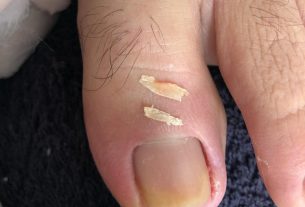Rett syndrome is a rare genetic condition that mainly affects girls and that damages the central nervous system, causing delays in physical and neurological development, generating typical characteristics and symptoms, such as frequent irritability, convulsions and involuntary movements.
Children with Rett syndrome may experience adequate childhood development between the first 6 to 18 months of age, but gradually tend to lose learned skills, including walking, eating, speaking or even moving their hands.
Although Rett syndrome has no cure, some care such as physical therapy, speech therapy, medication and psychotherapy help to alleviate symptoms and improve quality of life.

Main symptoms
The onset of symptoms and characteristics, as well as the severity of Rett syndrome varies from child to child, being divided into 4 stages:
1. Stage I
Stage I, also known as the early deceleration stage, usually occurs between 6 and 18 months and presents some very subtle characteristics and symptoms that may go unnoticed, such as:
- Head circumference smaller than expected for age;
- Decreased interest in other people;
- Little muscle strength;
- Reduced eye contact;
- Lack of interest in toys.
Additionally, during the first stage, the child may also experience developmental delays, such as difficulty sitting or crawling. These signs may only last a few months or last for more than a year.
2. Stage II
This stage begins between the child’s age of 1 and 4, and can last weeks or months, and appear quickly or gradually, including the following symptoms:
- Excessive crying, even for no apparent reason;
- Frequent irritation;
- Loss of control of hand movements;
- Repetitive hand movements, such as clapping your hands and bringing your hands to your mouth;
- Changes in breathing, including stopping and increasing breathing speed;
- Swallowing excess air, which can cause belly bloating and gas;
- Decreased social interaction;
- Sleep changes;
- Loss of speech.
During this stage, the child may also experience loss of posture control and difficulty moving and walking.
3. Stage III
Stage III, also known as the plateau stage, begins between the ages of 2 and 10. At this stage, signs and symptoms can last for many years, as described below:
- Difficulty balancing while standing;
- Involuntary muscle contractions;
- Teeth grinding;
- Seizures;
- Show a small weight gain.
However, at this stage the child tends to cry and become less irritated, in addition to showing greater interest in other people, improving attention, communication and social interaction.
4. Stage IV
Also known as the late stage of motor deterioration, this stage begins after the age of 10 and can last for years or decades and the main symptoms at this stage may include:
- Gradual reduction of movements;
- Muscle weakness and stiffness, especially in the legs;
- Loss of walking abilities, which may require the use of a wheelchair;
- Development of scoliosis;
- Frequent involuntary movements;
- Urinary and fecal incontinence;
- Urinary infection.
Furthermore, children at this stage may present involuntary tongue movements and excessive salivation, making it difficult to eat solid food, which can cause choking, weight loss, reflux and constipation.
Despite the evolution of some signs and symptoms at this stage, children are able to maintain or improve communication and social interaction skills, in addition to having fewer seizures and repetitive hand movements.
Causes of Rett syndrome
Rett syndrome is a genetic disease usually caused by a rare mutation in the MECP2 gene. However, not all children with this genetic change can develop the syndrome.
Although it is very rare, having close family members with Rett syndrome can also increase the risk of developing the syndrome.
How the diagnosis is made
The diagnosis is usually made by a multidisciplinary team, which includes a pediatrician, pediatric neurologist, geneticist and pediatrician specializing in neurodevelopment, who will evaluate the child’s signs and physical and neurological characteristics.
Make an appointment with your nearest pediatrician to begin investigating Rett syndrome:
Taking care of your health has never been easier!
To confirm the diagnosis of the syndrome, at least the following characteristics must be observed:
- Head circumference, which does not follow the ideal measurement after 5 months of life;
- Partial or total loss of the ability to move your hands naturally;
- Repetitive hand movements such as twisting, clapping, squeezing or rubbing hands;
- Difficulties interacting with other people;
- Lack of coordination of trunk movements;
- Partial or complete loss of speech;
- Developmental delay, such as difficulty sitting, crawling and walking;
- Walking on your toes and stiff legs.
In addition, doctors may also request some additional tests to help reach a diagnosis, such as blood tests, urine tests, magnetic resonance imaging and electroencephalograms.
To complement the diagnosis, the doctor may also recommend a genetic test to evaluate the mutation in the MECP2 gene, an important gene for brain development that is generally affected in Rett syndrome.
How the treatment is carried out
Treatment for Rett syndrome helps alleviate symptoms, improving communication, social interaction, movement and quality of life for children and adults with the syndrome.
Treatment must be carried out under the supervision of a multidisciplinary team, including a neurologist, physiotherapist, occupational therapist, speech therapist and nutritionist, and includes:
- Physiotherapy and hydrotherapy, which should be performed to improve muscle strength, posture and breathing, in addition to relieving scoliosis and improving balance and walking;
- occupational therapy, to help reduce repetitive movements and regain hand movement, improving daily activities such as eating and dressing;
- Speech therapy, to assist with speech and non-verbal language, improving communication and social interaction;
- Nutrition, which promotes a balanced and adequate diet, helping to maintain adequate development, in addition to preventing vomiting, reflux, constipation, choking and weight loss.
In addition, the doctor may also prescribe some medications that will help reduce some symptoms, such as vomiting, seizures, heart, sleep or respiratory problems.
Having a family member with Rett syndrome can be challenging and exhausting. Therefore, parents or guardians can also be advised to undergo psychotherapy sessions.
What is the life expectancy?
Because it is rare, not much is known about the life expectancy of those with the syndrome. However, children and adults with Rett syndrome usually live to be 40 or older.
Despite this, some situations, such as cardiovascular problems, pneumonia and epilepsy, can cause serious complications, which can be fatal in younger people.

Sign up for our newsletter and stay up to date with exclusive news
that can transform your routine!
Warning: Undefined array key "title" in /home/storelat/public_html/wp-content/plugins/link-whisper-premium/templates/frontend/related-posts.php on line 12
Warning: Undefined array key "title_tag" in /home/storelat/public_html/wp-content/plugins/link-whisper-premium/templates/frontend/related-posts.php on line 13



